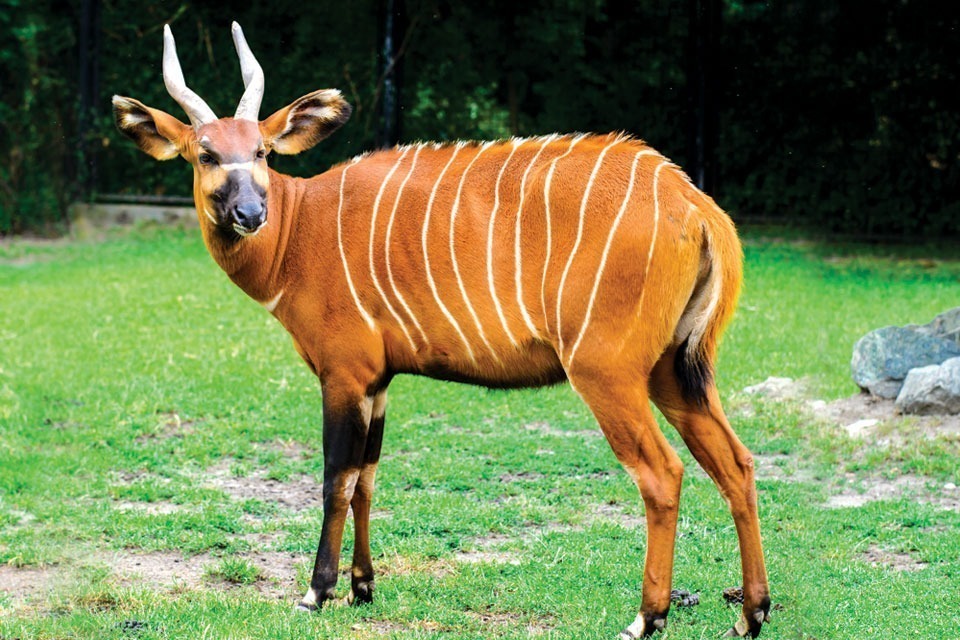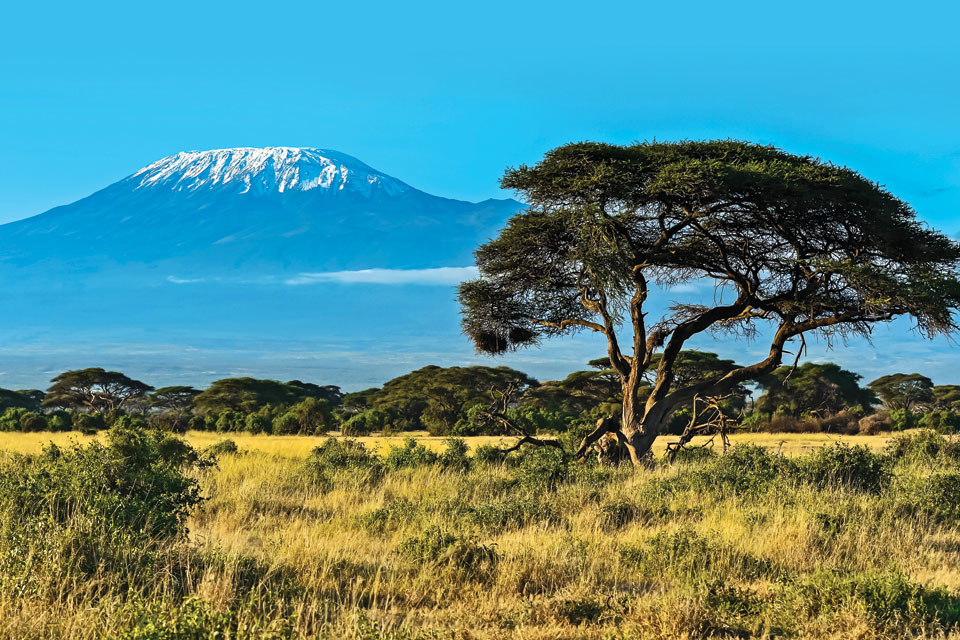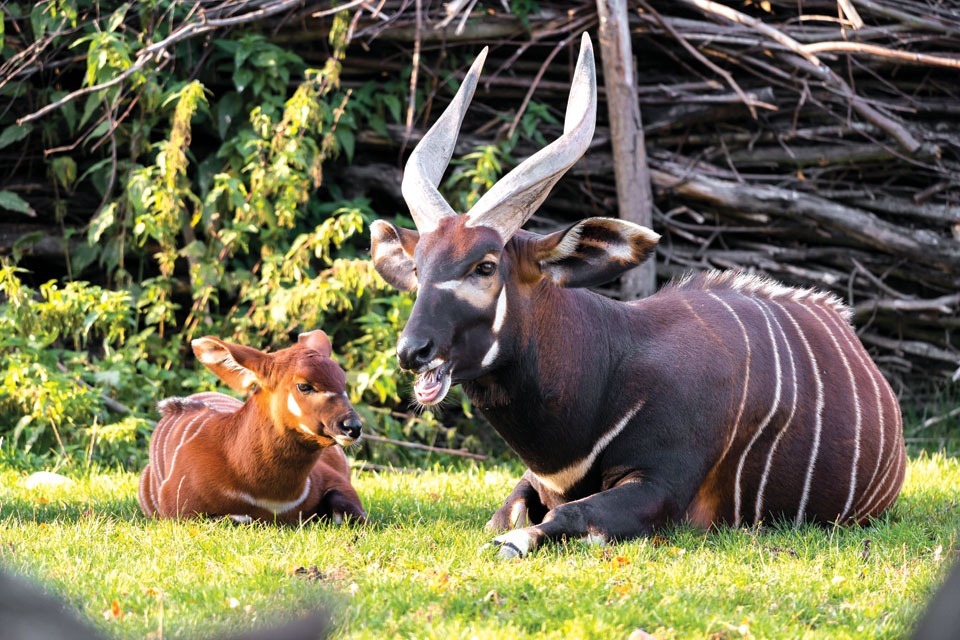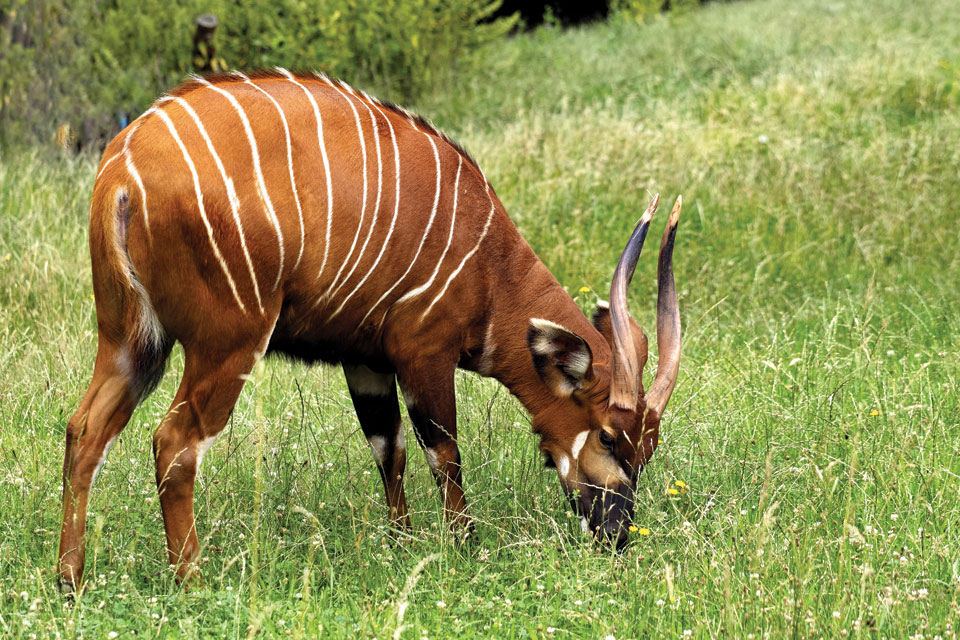
The bongo is critically endangered and Florida is playing a crucial role in saving the species.
A combination of disease, poaching and loss of forest habitat from illegal logging and agriculture have left fewer than 100 mountain bongos in the wild, according to the International Union for Conservation of Nature (IUCN).
There are two currently recognized subspecies – the mountain or eastern bongo and the lowland or western bongo. This antelope is the largest, heaviest, and most colorful African forest antelope.
The bongo is native to Africa and is the third largest antelope in the world. Bongos are characterized by a striking reddish-brown coat, black and white markings, white-yellow stripes and long slightly spiraled horns. They are the only antelope in which both sexes have horns. They have a complex social interaction and are found in African dense forest mosaics.
Adults of both sexes are similar in size. Adult height is about 3.6 to 4.3 ft. at the shoulder, and length is 7.1 to 10.3 ft. including a tail of 18–26 inches. Females weigh between 331–518 lbs. while males weigh about 485–893 lbs.
The bongo sports a bright auburn or chestnut coat, with the neck, chest, and legs generally darker than the rest of the body. Coats of male bongos become darker as they age until they reach a dark mahogany-brown color. Coats of female bongos are usually more brightly colored than those of males.
A white chevron appears between the eyes, and two large white spots grace each cheek. Another white chevron occurs where the neck meets the chest. The large ears are to sharpen hearing, and the distinctive coloration may help bongos identify one another in their dark forest habitats. Bongos have no special secretion glands, so rely less on scent to find one another than do other similar antelopes. The lips of a bongo are white, topped with a black muzzle.
Males, called bulls, tend to be solitary, while females with young live in groups of six to eight. They seek out females only during mating time. Gestation is about nine and one-half months, with one young per birth, and weaning occurs at six months. The newborn calf lies out in hiding for a week or more, receiving short visits by the mother to suckle it.
Calves grow rapidly and are quickly able to accompany their mothers in the nursery herds. Sexual maturity is reached at 24–27 months.
The preferred habitat of this species is so dense and difficult to operate in that few Europeans or Americans observed this species until the 1960s. As young males mature and leave their maternal groups, they most often remain solitary, although rarely they join an older male. Adult males of similar size and age tend to avoid one another.
Bongos are herbivorous browsers and feed on leaves, bushes, vines, bark and pith of rotting trees, grasses/herbs, roots, cereals, and fruits. Bongos require salt in their diets, and are known to regularly visit natural salt licks. Bongos are also known to eat burnt wood after a storm, as a rich source of salt and minerals. As a large animal, the bongo requires an ample amount of food, and is restricted to areas with abundant year-round growth of herbs and low shrubs. Suitable habitats for bongos must have permanent water available.
Bongos are quite timid and are easily frightened. They will run away after a scare at considerable speed and seek cover, where they stand still and alert with their backs to the disturbance. Their hindquarters are less conspicuous than the forequarters, and from this position the animal can quickly flee.

A white chevron appears between the eyes, and two large white spots grace each cheek. Another white chevron occurs where the neck meets the chest. The large ears are to sharpen hearing, and the distinctive coloration may help bongos identify one another in their dark forest habitats. Bongos have no special secretion glands, so rely less on scent to find one another than do other similar antelopes. The lips of a bongo are white, topped with a black muzzle.
Males, called bulls, tend to be solitary, while females with young live in groups of six to eight. They seek out females only during mating time. Gestation is about nine and one-half months, with one young per birth, and weaning occurs at six months. The newborn calf lies out in hiding for a week or more, receiving short visits by the mother to suckle it.
Calves grow rapidly and are quickly able to accompany their mothers in the nursery herds. Sexual maturity is reached at 24–27 months.
The preferred habitat of this species is so dense and difficult to operate in that few Europeans or Americans observed this species until the 1960s. As young males mature and leave their maternal groups, they most often remain solitary, although rarely they join an older male. Adult males of similar size and age tend to avoid one another.
Bongos are herbivorous browsers and feed on leaves, bushes, vines, bark and pith of rotting trees, grasses/herbs, roots, cereals, and fruits. Bongos require salt in their diets, and are known to regularly visit natural salt licks. Bongos are also known to eat burnt wood after a storm, as a rich source of salt and minerals. As a large animal, the bongo requires an ample amount of food, and is restricted to areas with abundant year-round growth of herbs and low shrubs. Suitable habitats for bongos must have permanent water available.
Bongos are quite timid and are easily frightened. They will run away after a scare at considerable speed and seek cover, where they stand still and alert with their backs to the disturbance. Their hindquarters are less conspicuous than the forequarters, and from this position the animal can quickly flee.


Florida’s role
Through an international collaborative effort, Florida International University scientists are working to save the bongo and with it the high-mountain eco-system that supplies 80 percent of Kenya’s people with clean, fresh water.
The vision of FIU’S Tropical Conservation Institute is broad, has high-impact and is practical. They are directly implementing species conservation and recovery projects while developing research and education programs that prioritize species and ecosystem protection. By building capacity among students and international conservation practitioners, they are benefiting tropical and sub-tropical species and their habitats.
The founding director of the Rare Species Conservatory at the institute in Loxahatchee, Florida has devoted a lifetime to saving species on the brink of extinction. Recently, he and his team counted eight newborn East African bongo antelopes in their population bringing the total to 45 bongos at the Conservatory. For an animal as critically endangered as the bongo, with only 100 remaining in the wild, eight is a stand against extinction and a message of hope. These bongos will eventually be returned to Africa in a protected sanctuary and released.

